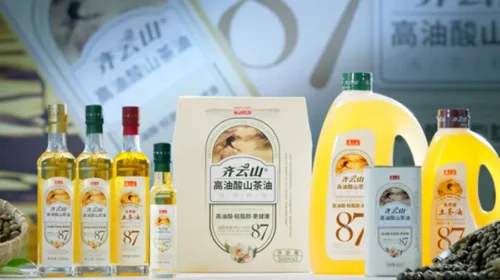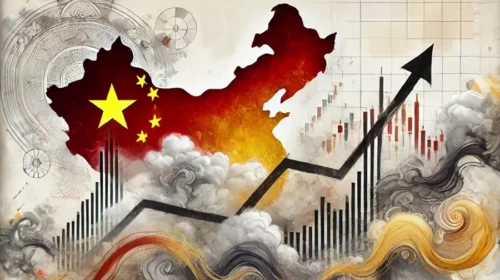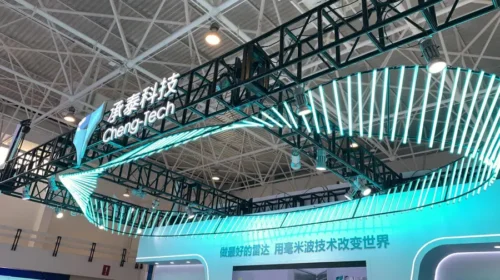Topsports sprints ahead as foreign-brand boycott fades

The seller of Nike and Adidas brand shoes and sportswear in China said its sales rose by a ‘low 20s’ percentage amount in its fiscal first quarter through May
Key Takeaways:
- Topsports’ revenue rose by a “low 20s” percentage amount in its fiscal first quarter, indicating negative effects of an earlier boycott that affected its products may be fading
- The seller of Adidas and Nike shoes and sportswear in China closed 15% of its stores last year in a bid to improve performance by shuttering underperforming outlets
By Doug Young
Foreign consumer brands are back on the shelf in the “China clothing store,” ending a two-year chill as effects of a consumer boycott dating back to 2021 start to fade.
That’s one of the key messages coming from a brief first-quarter business update from Topsports International Holdings Ltd. (6110.HK), which says its sales rose by a “low 20s” percentage amount year-on-year in its fiscal first quarter that runs through May. There are a few caveats when comparing Topsports to its peers, which we’ll discuss shortly, so please feel free take our assertion about foreign brands returning to favor with a grain of salt.
As the largest seller of Nike and Adidas shoes and other athletic wear in China, Topsports is a sort of proxy not only for the sportswear market but also for foreign brands in the market. By comparison, most of its major rivals, like Li Ning (2331.HK), Anta (2020.HK) and Xtep (1368.HK), are all very much hometown brands, selling most of their products under their own names.
Topsports’ high-20s percentage sales growth looks quite impressive when compared those domestic peers. Both Li Ning and Anta previously reported much lower mid single-digit gains for their namesake brands in the first three months of this year. But notably, Anta reported stronger high single-digit gains for its Fila products, following its purchase of China rights for the foreign brand in 2009.
The stronger growth for Fila versus the Anta brand, while probably only a few percentage points, would seem to back up our assertion that foreign brands are bouncing back into favor among Chinese consumers. While Anta and Li Ning both posted very modest gains in the first quarter, Xtep, which is a lower-end brand, also posted a 20% sales gain for the quarter.
That would seem to indicate the lower-end brands are also doing relatively well lately, in addition to foreign brands like Nike and Adidas.
China’s broader retail sector has been filled with mixed signals lately, though the broader sound is distinctly negative, as consumers rein in their spending due to recent economic uncertainty. Overall retail sales in China, excluding car purchases, rose 10.5% year-on-year in March, 16.5% in April and 11.5% in May, according to Chinese government statistics.
While those figures may look good, we need to add our first major caveat for anyone who can’t remember what China looked like in the year-ago period. Back in the spring of 2022, huge swaths of the country were locked down as China tried to contain fresh outbreaks of the highly contagious Covid-19 Omicron variant. Shanghai came to symbolize that effort, with the whole city locked down for the entire months of April and May.
With that kind of weak year-ago comparisons, it’s not difficult to see why retail growth figures this past spring looked particularly strong. Still, Topsports’ low-20s increase is roughly double the overall retail sector’s gains in the three months to May, meaning the company outperformed the market. But we should note that Topsports recorded a high-20s percentage sales decline in the same quarter of 2022 during the height of last year’s lockdowns.
Foreign brand boycott
The last two years haven’t been kind for foreign brands in China, especially from the fashion sector. The trouble began when some foreign clothing makers declared they wouldn’t use cotton grown in western China’s Xinjiang region, citing labor issues. Many Chinese consumers reacted by boycotting those brands, though the boycotts ultimately spread to most foreign brands, including ones that weren’t involved in the cotton issue.
As the proxy for Nike and Adidas in China, Topsports took a heavy hit over the last two years, reporting sales declines of 11% and 15% in its last two fiscal years. Thus, the company’s latest gains appear to show its situation has finally stabilized, and it may even be poised for a strong comeback as the earlier boycotts start to fade from Chinese consumers’ memories.
Analysts certainly seem to feel that way, forecasting Topsports’ revenue will rise 17% this year, while its profit should grow by an even faster 34%, according to Yahoo Finance.
Despite the turnaround, Topsports’ stock is priced at a relative discount to Li Ning and Anta, which are generally considered China’s leading domestic brands. Topsports trades at a forward price-to-earnings (P/E) ratio of just 16, compared to 22 for Li Ning and 21 for Anta. Its stock is more in line with Xtep, which also trades at a forward P/E of 16.
That means the company’s shares could represent a good buying opportunity for anyone who believes that the latest foreign boycott is in the past. Topsports’ stock rose 1% on Monday in Hong Kong before its latest business update, and was up 5.8% so far this year as of Monday’s close. But it’s also down nearly 10% over the last eight trading days, amid a broader stock market pull-back as investors grow increasingly pessimistic about China’s economic outlook.
Topsports is also taking steps to improve its performance through a massive campaign to retool its retailing footprint. The company operates a national network of more than 6,000 stores, but is closing many underperforming, smaller outlets to focus on larger-format shops.
Its retrenchment accelerated last year, as it closed a net 1,130 stores during the year – equal to 15% of its total at the start of the year – bringing its total to 6,565 at the end of February. As a result of the mass closures, the company’s gross selling area of its directly operated stores fell 6.5% in its fiscal first quarter compared with a year earlier, according to the latest update.
At the end of the day, we can probably say that Topsports looks set for a rebound as effects of the earlier boycotts fade. But there’s always the chance for future boycotts, especially in the current climate of so many geopolitical tensions between China and the west. And growing caution among Chinese consumers could also hit big-brands like Nike and Adidas if budget-conscious shoppers decide to buy lesser-known, cheaper domestic brands over costlier foreign ones.
Have a great investment idea but don’t know how to spread the word? We can help! Contact us for more details.
To subscribe to Bamboo Works weekly free newsletter, click here






